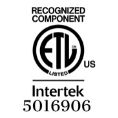Privacy and efficiency are essential considerations for both residential and commercial spaces. Traditional solutions like blinds and curtains are becoming outdated as modern technology offers smarter, more stylish, and functional alternatives. One such innovation is switchable glass, also known as privacy glass, which transforms from clear to opaque instantly with the flick of a switch.
This cutting-edge technology provides on-demand privacy while maintaining a sleek, modern look. Whether in homes, offices, healthcare facilities, or retail spaces, switchable glass is revolutionizing the way we think about interior design, functionality, and energy efficiency.

How Does Switchable Glass Work?
Switchable glass operates using electrically controlled films that alter the glass’s transparency. The most common type is Polymer Dispersed Liquid Crystal (PDLC) technology, which works as follows:
- PDLC Film Integration – The key component is a PDLC film, which contains liquid crystals embedded in a polymer matrix.
- Power Control – When no electricity is applied, the liquid crystals remain scattered, making the glass appear frosted or opaque. When an electric current is activated, the liquid crystals align, turning the glass transparent.
- Lamination Process – The PDLC film is laminated between two glass layers, enhancing durability, safety, and optical clarity.
Other forms of switchable glass include:
- Photochromic Glass – Reacts to UV light, darkening when exposed to sunlight.
- Thermochromic Glass – Adjusts its tint based on temperature changes.
Each type offers unique benefits depending on the intended use and environment.
Types of Glass Used for Switchable Technology
Switchable technology can be integrated into various glass types to meet different needs:
- Standard Glass – Any glass surface can be made switchable with the application of smart film.
- Laminated Glass – Provides additional safety, often used in architectural applications.
- Tempered Glass – Strengthened for durability, commonly found in high-traffic areas.
- Specialty Glass – Includes fire-rated, X-ray, bulletproof, and hurricane-rated glass, all of which can be made switchable.
This adaptability makes switchable glass a versatile solution for a wide range of applications.
Where is Switchable Glass Used?
The flexibility and convenience of switchable glass make it suitable for numerous settings:
1. Residential Applications
- Bathrooms & Showers – Provides privacy without requiring blinds or curtains.
- Interior Partitions – Separates spaces while maintaining an open-concept feel.
2. Commercial & Office Spaces
- Conference Rooms & Office Partitions – Offers privacy for meetings while maintaining a sleek, modern aesthetic.
- Reception Areas & Lobbies – Enhances design while allowing for dynamic space use.
3. Healthcare & Medical Facilities
- Hospital ICU & ER Areas – Improves hygiene and privacy for patients and medical staff.
- Clinic Consultation Rooms – Creates an adaptable space that offers both transparency and confidentiality.
4. Retail & Hospitality
- Fitting Rooms – Provides a modern alternative to traditional dressing rooms.
- Hotel Bathrooms & Suites – Enhances guest experiences with high-tech privacy features.
5. Banking & Security
- Teller Windows & Safe Deposit Rooms – Adds an extra layer of security while maintaining a professional appearance.
The growing demand for smarter, more efficient spaces is making switchable glass a popular choice across various industries.
Why Choose Switchable Glass?
Switchable glass offers a range of benefits beyond just privacy control:
✅ Instant Privacy
- Eliminates the need for curtains or blinds while providing on-demand privacy.
✅ Energy Efficiency
- Blocks 73% of infrared radiation when opaque and reduces heating/cooling costs.
- Even in its frosted state, it allows natural light to pass through, reducing the need for artificial lighting.
✅ Cost Savings Over Time
- While the initial cost is higher than standard glass, it removes the need for blinds, reduces energy bills, and lowers maintenance costs.
✅ Noise Reduction
- Switchable glass provides soundproofing benefits, ideal for offices, hotels, and hospitals.
✅ Enhanced Safety
- Constructed with tempered and laminated glass, making it durable and impact-resistant.
✅ UV Protection
- Blocks 99% of harmful UV rays, protecting interiors from fading and reducing health risks.
✅ Multipurpose Functionality
- Can be used as a projection screen for presentations or as a whiteboard in office settings.
✅ Hygienic & Easy to Clean
- Unlike curtains or blinds, which collect dust and bacteria, switchable glass can be cleaned like any standard glass surface, making it a perfect choice for hospitals and sterile environments.
✅ Modern & Timeless Design
- Offers a sleek, contemporary look that complements both classic and futuristic spaces.
What About Insulated Glass Units (IGUs)?
Switchable glass can also be integrated into Insulated Glass Units (IGUs) for improved performance.
An IGU consists of two or more glass panes separated by an air gap, enhancing thermal insulation and soundproofing. Combining IGU technology with switchable glass creates an advanced privacy solution with added energy efficiency.
How Much Does Switchable Glass Cost?
The price of switchable glass depends on factors like size, type, and order quantity:
Smart Glass: Typically ranges from $80 to $130 per square foot, with bulk discounts available.
Smart Film: Costs $25 to $55 per square foot, making it a budget-friendly alternative.
Shipping Costs: Within North America, shipping ranges from $100-$300 (smart film) to $500-$2000 (smart glass), depending on location, weight, packing size and qty.
While the upfront investment may be higher than traditional glass, the long-term savings in privacy solutions, energy efficiency, and maintenance costs make it a worthwhile investment.
The Future of Switchable Glass
With the smart glass market projected to reach $7.5 billion by 2028, this technology is set to become a standard feature in modern architecture.
As advancements continue, switchable glass will play a key role in enhancing sustainability, energy efficiency, and smart home automation. Whether in residences, offices, healthcare, or retail spaces, the possibilities for integrating switchable glass into innovative designs are endless.
Switchable glass is more than just a high-tech novelty—it’s a game-changing innovation that offers privacy, efficiency, and modern design in one package.
Whether you’re looking to upgrade your home, enhance office spaces, or improve security in commercial settings, switchable glass is the smart choice for a smarter future.
Ready to transform your space? Contact us today for a free quote and explore how switchable glass can elevate your next project.





